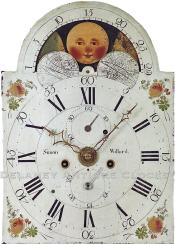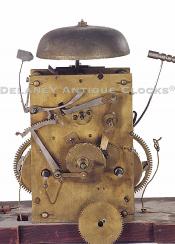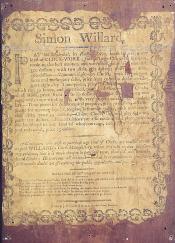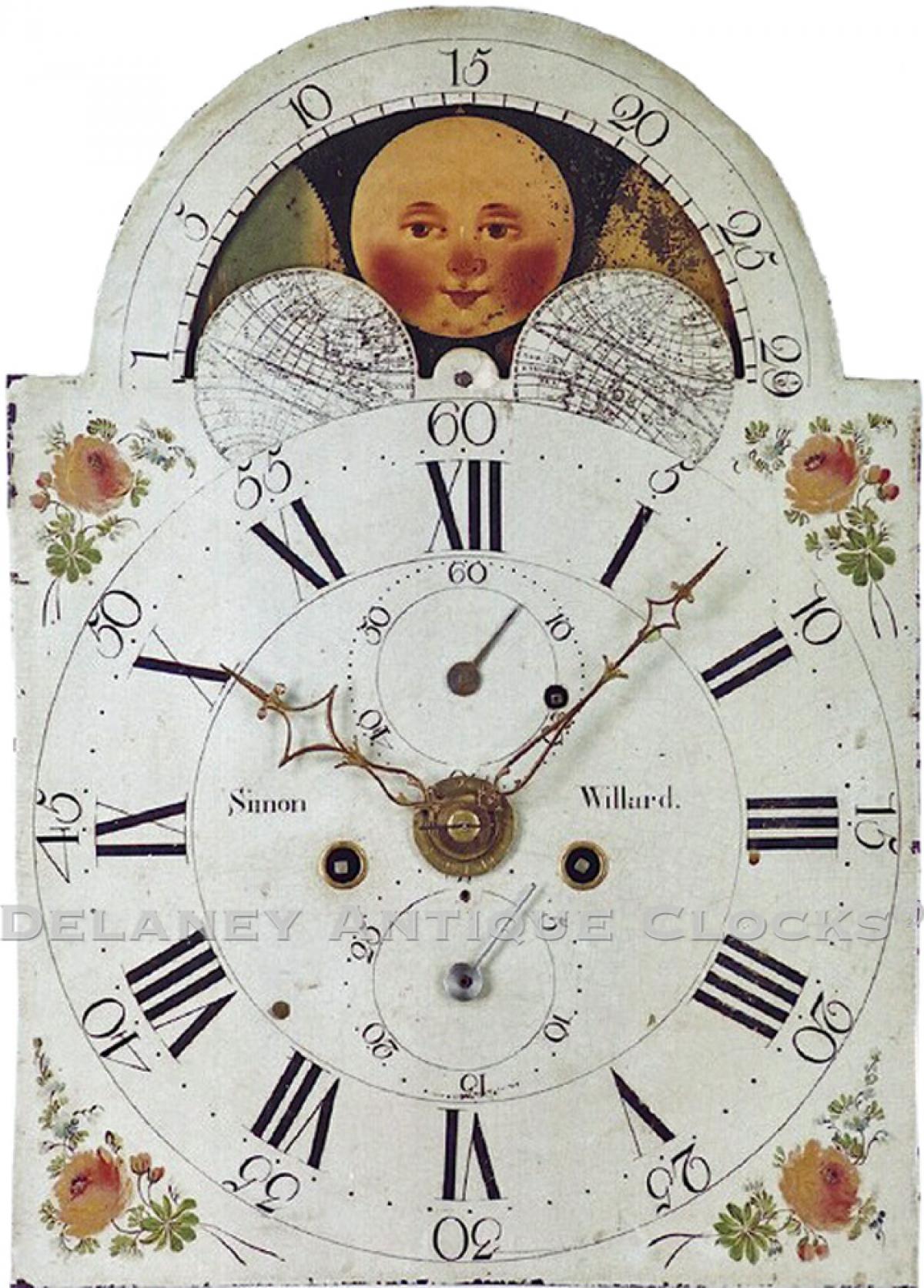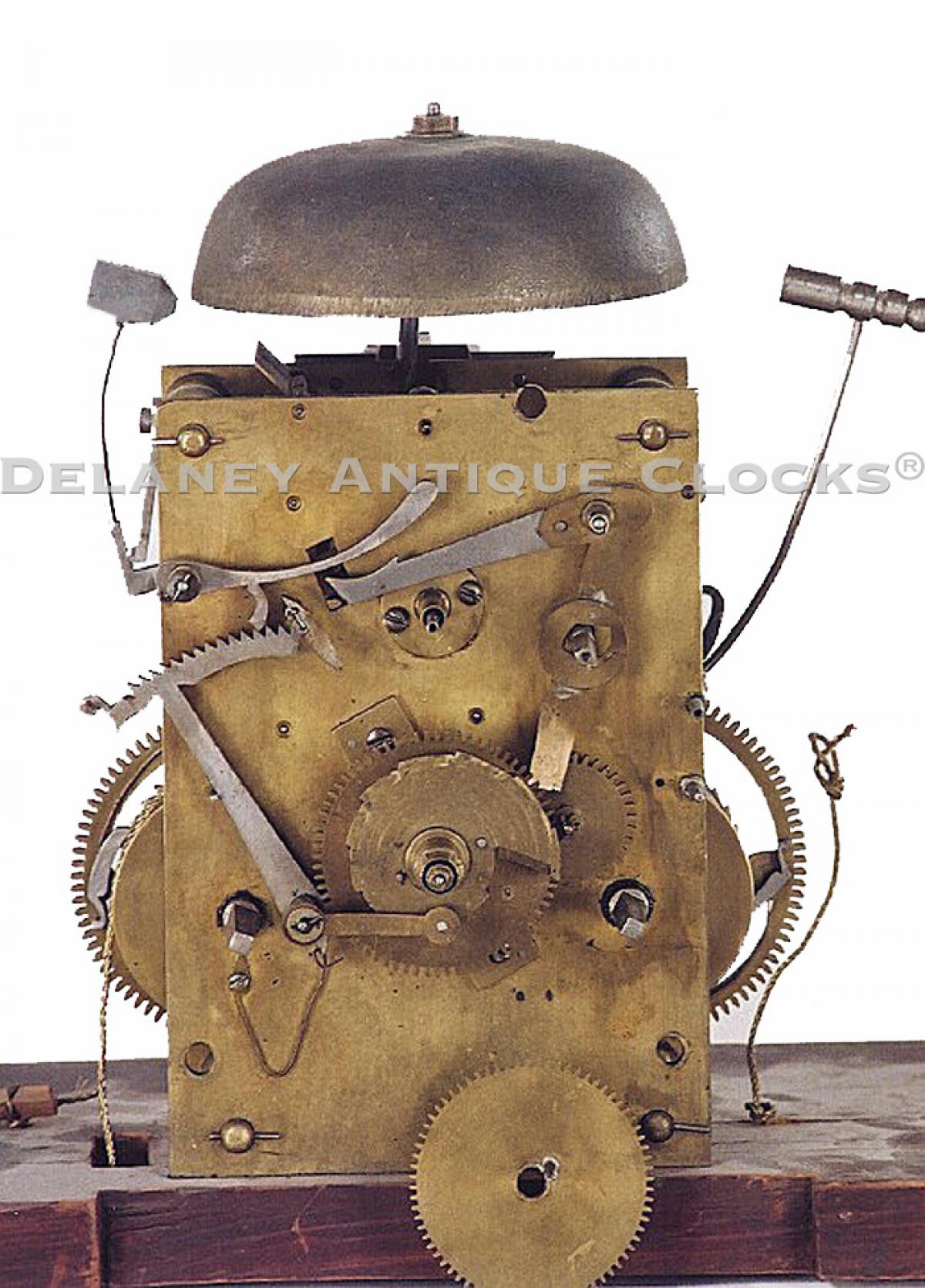Simon Willard Tall case clock with an alarm and a labeled mahogany case. Roxbury, Massachusetts. 27253.
This mahogany case is nicely proportioned. It stands 7 feet 8 inches tall to the top of the center finial. The case is constructed in mahogany and retains a wonderfully maintained older finish. The wood selected for the waist door and base panel is nicely figured. The grain pattern features long sweeping lines adding an old-world charm. The case stands on nicely formed ogee bracket feet. They are applied to a double-step molding. The front base panel is lined inlaid around its perimeter. The waist section is long and narrow. It is fitted with a rectangular shaped door that is trimmed with an applied molding around the outer edge. Pasted to the back of this door is the Clockmaker's set-up label. This is unusual. Very few examples retain this document. As a result, it is worth noting this fact. This label was printed by J. Joseph N. Russell. They were located on Quaker Lane in Boston. It is a large label that measures 10.75 inches tall and 8.75 inches wide. The waist section is flanked by brass stop-fluted quarter columns, which terminate in brass quarter capitals. The bonnet features the traditional Roxbury fretwork design. The three fluted chimney plinths support the three brass ball-and-spike finials. Fully turned and brass stop fluted bonnet columns ending in cast brass capitals flank the bonnet door. This door is an arched form, and it is fitted with glass. It opens to a colorfully painted iron dial.
This dial features a moon phase or lunar calendar in the arch. Colorful floral decorations are positioned in each of the four spandrel areas. This dial is signed by the Clockmaker in block lettering. The time ring is formatted with roman numeral hour markers. Arabic numerals are used to mark the five-minute positions. A subsidiary seconds dial and calendar dial can be viewed inside the time ring in their traditional locations.
The movement is brass and of good quality. It is weight powered, retaining its original tin can weights, and designed to run eight days fully wound. It will also strike each hour on the hour on a cast iron bell. This bell is mounted above the movement. This clock also features an alarm. This is mounted between the plates and is wound with a key through the front of the dial. When engaged, it strikes the hour bell at a rapid rate. This is an unusual feature for a tall case clock. It is interesting to speculate why someone would want such a device in the late 1700s.
This fine clock was made circa 1798.
This clock is inventory number 27253.
Simon Willard was born in Grafton, Massachusetts, on April 3, 1753. He was the seventh of twelve children born to Benjamin Willard (1716-1775) and Sarah (Brooks) Willard (1717-1775) of Grafton. While living in Grafton, Simon answered the Lexington alarm on April 19, 1775, along with his brothers. It is thought that by 1782 he moved from Grafton and took up residence in Roxbury as a Clockmaker. Simon became a Master Clockmaker as well as an inventor. He is well known for receiving patents for his roasting jack in 1782, his "Improved Timepiece" or Banjo clock in 1802, and an alarm clock patent. In addition, he trained many men to make clocks who became well-known Clockmakers once their apprenticeships were served. Some of them include the brothers Levi and Able Hutchins, Elnathan Taber, William Cummens, Ezekiel Jones and Daniel Munroe. Some of the more notable public clocks Simon built include the clock in the United States Capitol building's Statuary Hall. He also built a clock for the House of Representatives and the U. S. Senate. Simon died on August 30, 1848, at the age of 95.


